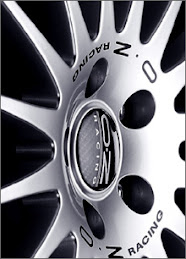

Bentley Motors Limited is an English manufacturer of luxury automobiles and Grand Tourers. Bentley Motors was founded in England on January 18, 1919 by Walter Owen Bentley, known as W.O. Bentley or just "W.O." (1888–1971). He was previously known for his successful range of rotary aero-engines in World War I, the most famous being the Bentley BR1 as used in later versions of the Sopwith Camel. Since 1998 the company has been owned by the Volkswagen Group.
A group of wealthy British automobile aficionados known as the "Bentley Boys" (Woolf Barnato, Sir Henry Birkin, steeplechaser George Duller, aviator Glen Kidston, automotive journalist S. C. H. "Sammy" Davis, and Dr. Dudley Benjafield among them) kept the car's reputation for high performance alive. At one point, on a bet, Barnato raced Le Train Bleu from Cannes to Calais, then by ferry to Dover and finally London, travelling on public highways with normal traffic, and won ; the special-bodied 6.5L car became known as the Blue Train Bentley. Thanks to the dedication of this group to serious racing, the company, located at Cricklewood, north London, was noted for its four consecutive victories at the 24 hours of Le Mans from 1927 to 1930. Their greatest competitor at the time, Bugatti, whose lightweight, elegant, but fragile creations contrasted with the Bentley's rugged reliability and durability, referred to them as "the world's fastest lorries". Perhaps the most iconic model of the period is the 4.5L "Blower Bentley", with its distinctive supercharger projecting forward from the bottom of the grille. Uncharacteristically fragile for a Bentley, however, it was not the racing workhorse the 6L was. It became famous in popular media as the vehicle of James Bond in the original novels, but not in film; rather, John Steed in the television series The Avengers did drive a Bentley.
A great deal of Barnato's fortune went to keeping Bentley afloat after he became chairman in 1925; but the Great Depression destroyed demand for the company's expensive products, and it was finally sold to Rolls-Royce in 1931.
Rolls-Royce merged the Bentley line into its own, so that the Bentley marque became just a Rolls-Royce without the distinctive grille and with a lower price tag. In the 1980s, however, Bentley became a separate, high performance car line once again. The most notable car in the Rolls-Royce period was probably the Bentley Continental, which appeared in various forms from 1952 to 1965, and again in 1992 with production ending in 2003. The Bentley factory in Crewe, Cheshire, is still known in the town by the name "Royce's".
In 1998, Rolls-Royce and Bentley Motors was purchased from Vickers (its owner since 1980) by Volkswagen for £430 million, after bidding against BMW. BMW had recently started supplying components for the new range of cars, notably V8 engines for the Bentley Arnage and V12 engines for the Rolls-Royce Silver Seraph. The Rolls-Royce name was not included in VW's purchase; it was instead licensed to BMW (for £40 million) by the Rolls-Royce aero engine company.
BMW and Volkswagen came to an agreement whereby Volkswagen would manufacture both Bentley and Rolls-Royce cars until the end of 2002, whereupon the right to build Rolls-Royce cars would be BMW's alone. During this period, Volkswagen reduced its reliance on BMW as a supplier: as of 2003, BMW engines are not used in Bentley cars.
In 2002, Bentley presented Queen Elizabeth II with an official State Limousine to celebrate the Golden Jubilee. In 2003, Bentley's 2-door convertible, the Bentley Azure, ceased production, and the company introduced the Bentley Continental GT, a large luxury coupe. The car is powered by a version of VW's W-12 engine.
Demand had been so great that the factory at Crewe, Cheshire, had been unable to satisfy it despite installed capacity of approximately 9500 vehicles a year. There was a waiting list of over a year for new cars to be delivered. Consequently, production of the new Flying Spur, a four-door version of the Continental GT, was assigned to the Transparent Factory, where the VW Phaeton luxury car is also assembled. This arrangement ceased at the end of 2006, all car production reverted to the Crewe plant.
In April, 2005, Bentley confirmed plans to produce a 4-seat convertible model, the Azure, derived from the Arnage Drophead Coupe prototype, at Crewe beginning in 2006. By the fall of 2005, the convertible version of the successful Continental GT, the Continental GTC was also presented. These two models were successfully launched in late 2006.
Bentley sales have been strong in 2005 with 8,627 sold worldwide, 3,654 of these vehicles were sold in the United States.





















No comments:
Post a Comment